Hey there,
I’m currently building a tiny DOS gaming PC and needed a sound card for it. Unfortunatly there aren’t many PC/104* sound cards available so I spun up my own.
*= PC/104 – Wikipedia, basically a form factor standart
Since I wanted a sound card that was compatible with most standards so I can play as many games as possible with it I desided on the Avance Logic ALS100 Plus+. The IC is pretty well documented what made designing the sound card much easier.
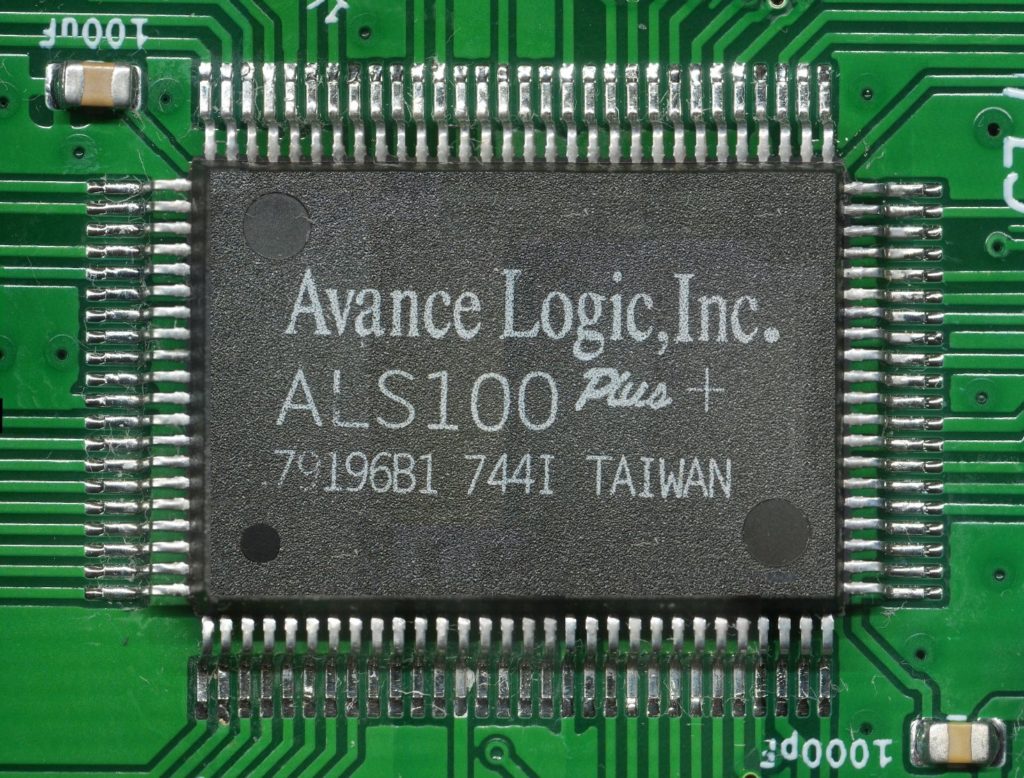
It’s features are:
Compatibility
• Adlib
• All Sound Blaster Pro applications
• All Sound Blaster 16 applications
• MPU-401 UART MIDI
• PC Speaker
• Sound Blaster ADPCM
• Yamaha OPL3 FM Synthesizer
That’ll cover every game I’m interested in. The PC speaker is mixed in with the audio out by the IC, that’s pretty cool.
The hardware specifications of the new sound card are as following:
Hardware specifications
• Software selectable DMA lines (0, 1, 3)
• Software selectable interrupt lines (5, 7, 9, 10, 11)
• PC/104 ISA Plug and Play bus interface
• DMA interface with FIFO
• Enhanced Game port
• 8-bit or 16-bit stereo digital audio from 4 kHz to 48 kHz
• 3D Sound Effect Processor
• FM/wavetable synthesis via OPL3
• Wavetable connector
• Stereo Line-Out
Design and development
If you’re just here for the design files and aren’t interested in the failures I’ve had designing the sound card just skip to the end 🙂
At first I took the specifications directly from the PC/104 consortium for the measurements: PC/104 – PC/104 ConsortiumPC/104 Consortium (pc104.org)
Then I read the manufacturer’s design sheet to build a sound card for the ALS100 Plus+ and added some minor noise cancellation.
First fail:
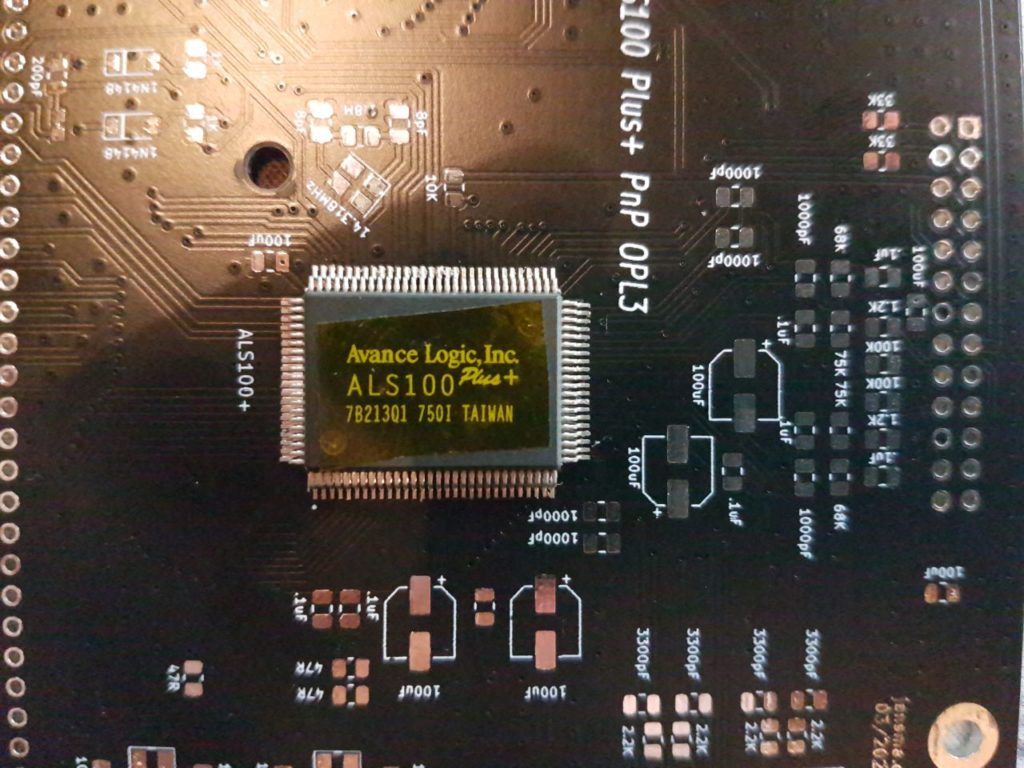
Yeah well, the IC is a bit bigger than a PQFP-100 (10% bigger to be exact). Meh. I tried to shorten the legs but ultimatively ordered another PCB. Bummer.
Second fail:
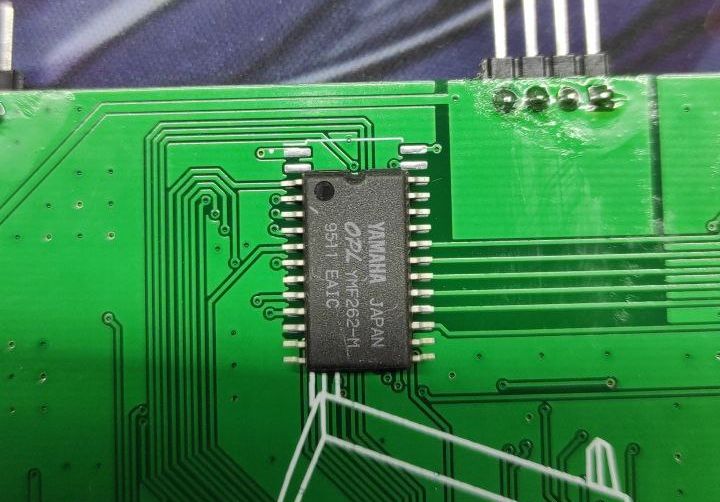
If you thought I would learn from my first mistake – think again! Yeah, so the OPL3 is also wider than a normal SOIC-24. This time I shortened the legs and soldered it down and went to testing (I shifted the IC down in the photo to better visualize the difference).
Third fail:
8bit- and 16bit-audio worked straight of the box so was the PC Speaker, but the FM synthesis was garbled. Staring at the schematics revealed another pretty stupid mistake:
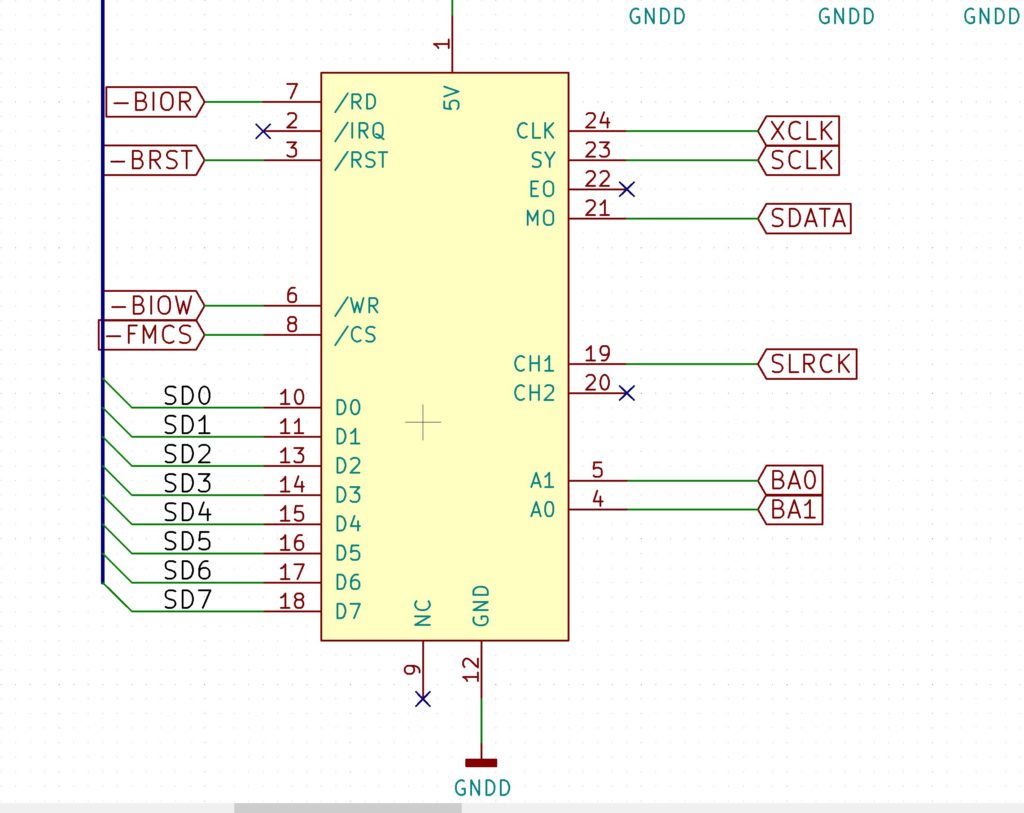
If you havn’t spotted it yet: I switched around the adress lines. I cut the traces on the pcb and rewired them and FM synthesis was finally working.
Fourth fail (more like a foreseen issue):
There was a faint hum in the audio when plugging in a wavetable daughterboard. The soundcard has a digital and an analog ground which are connected at one point:
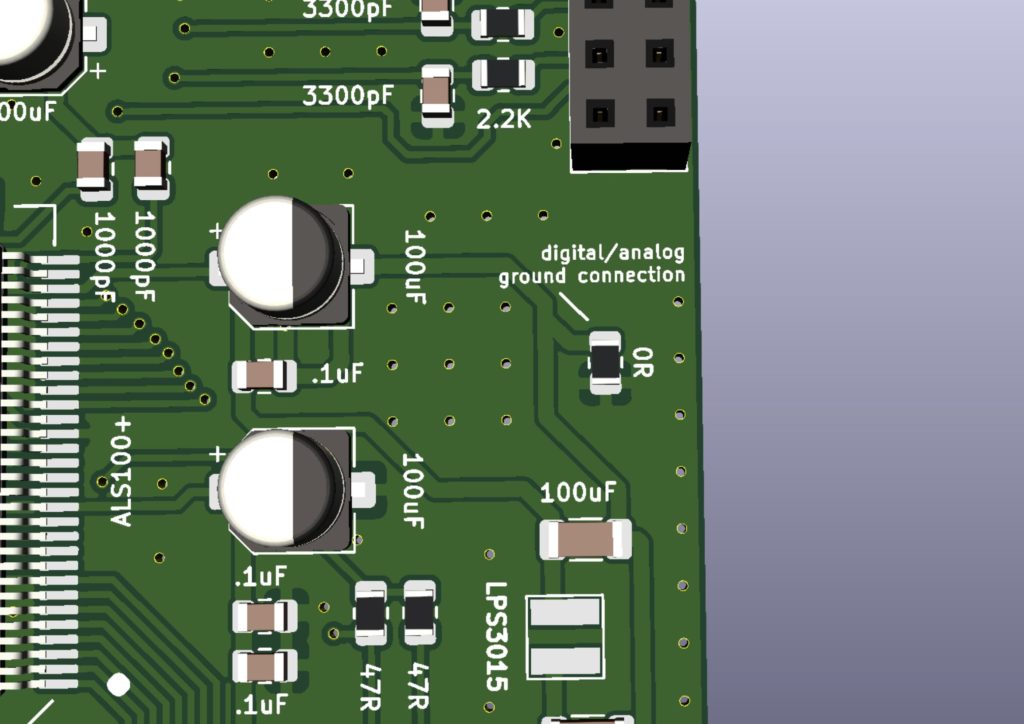
That’s fine and dandy – but the wavetable did just the same, so it created a ground loop. I removed the resistor on the sound card and the hum was gone 🙂
The dimensions for the wavetable daughterboard are approximately like this:
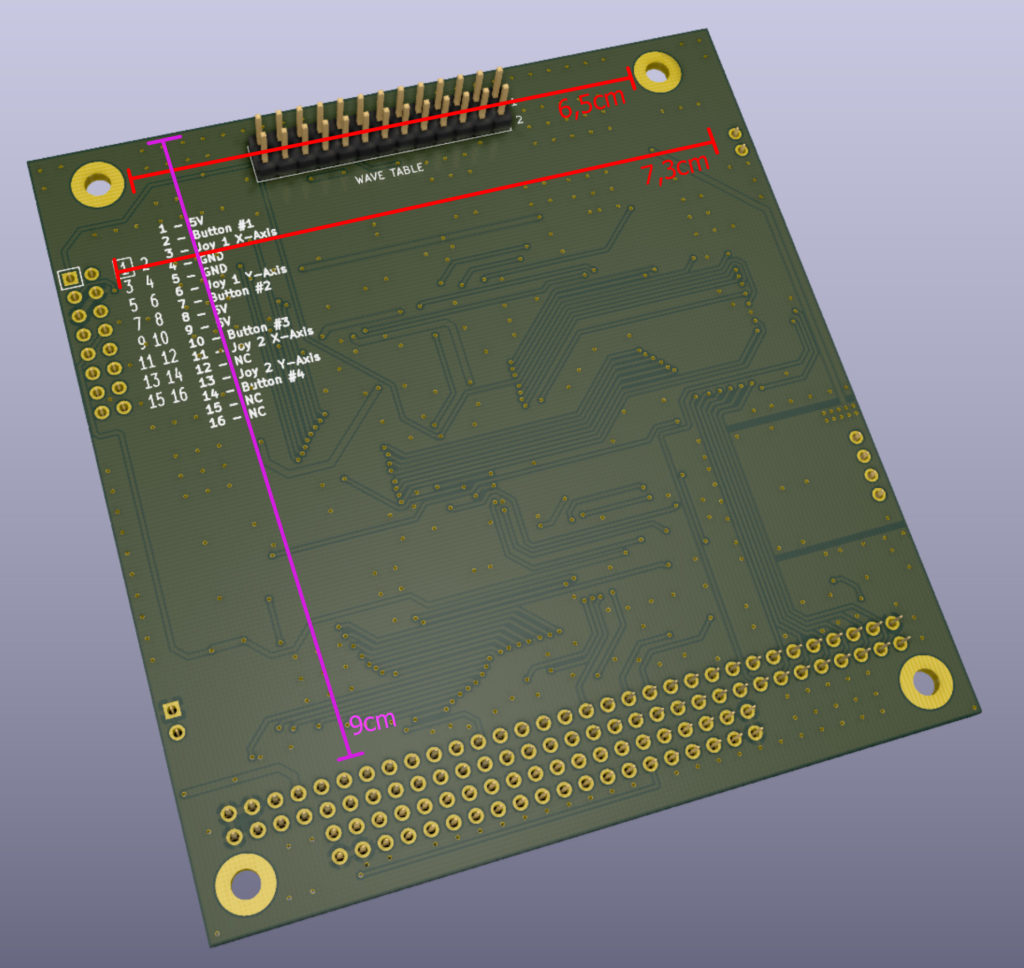
While testing I used a Dreamblaster X2 which fits nicely. Also pictured: The fix for fail #1 and an OPL3-clone.
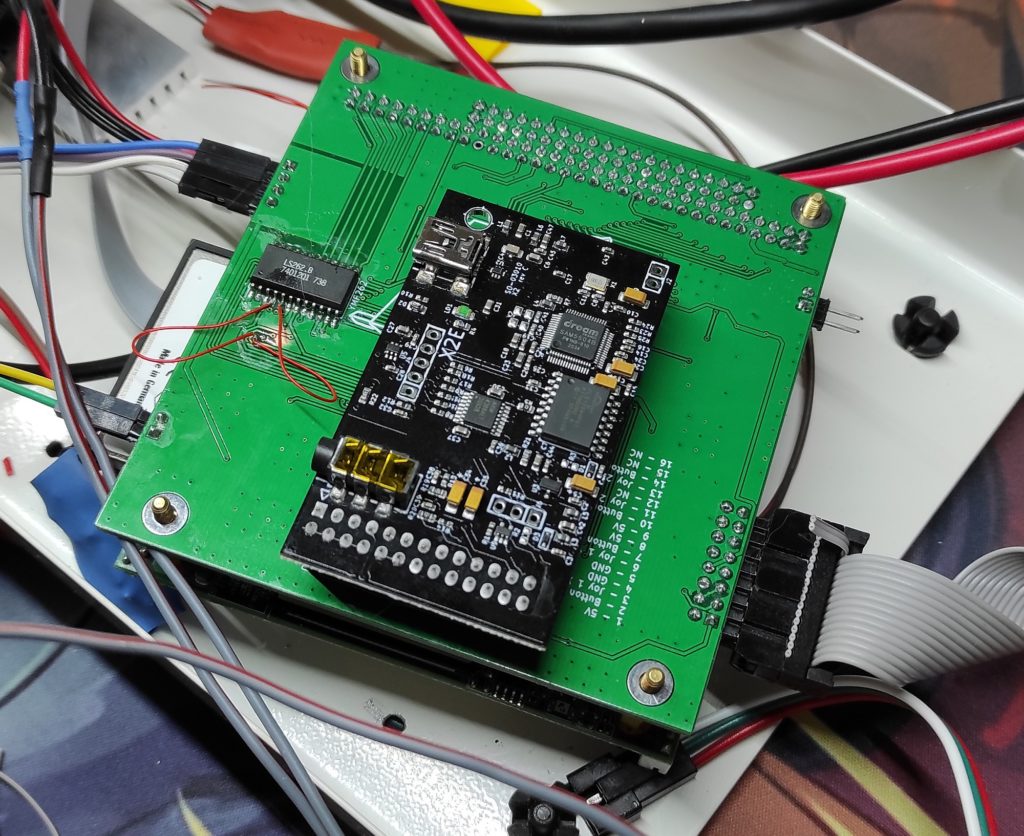
Downloads
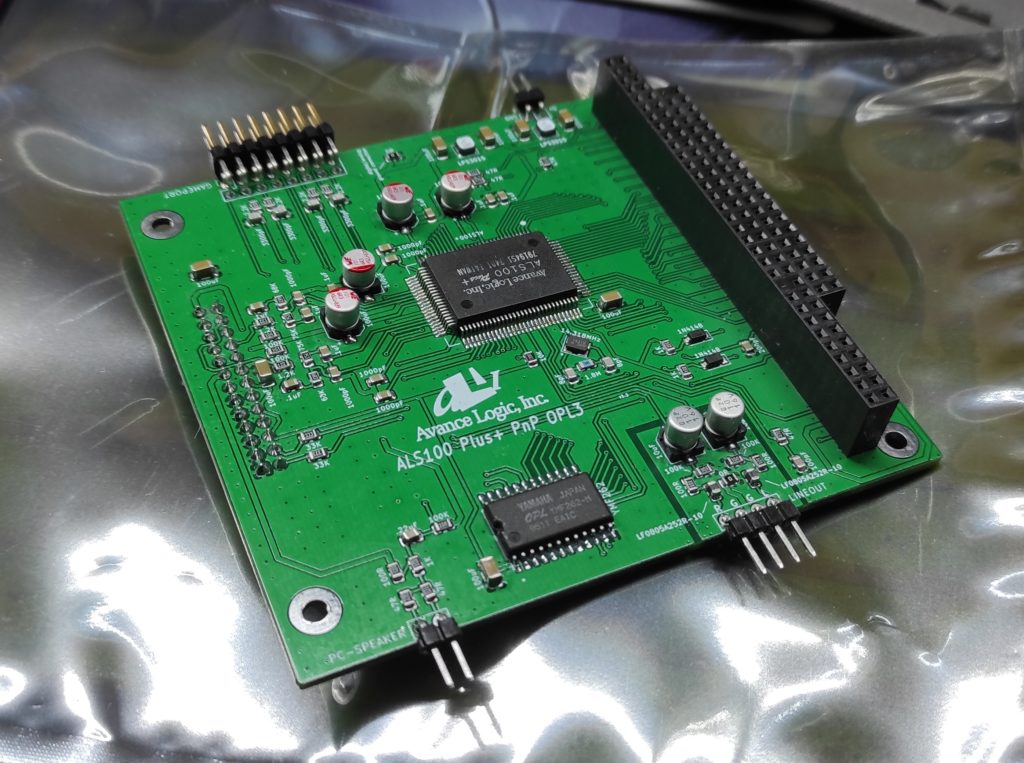
Gerbers: Download
Schematics: Download
iBOM: Download
Drivers: Download
kicad symbol and footprint of the PC/104 board: Download
BOM* with links to mouser.com: Download
*= Missing from BOM:
• PC104-Connector, available on mouser.com
• OPL3, available new old stock from various suppliers
• ALS100 Plus+, unfortunatly EOL since the late 90s, so you have to desolder it from a working sound card.
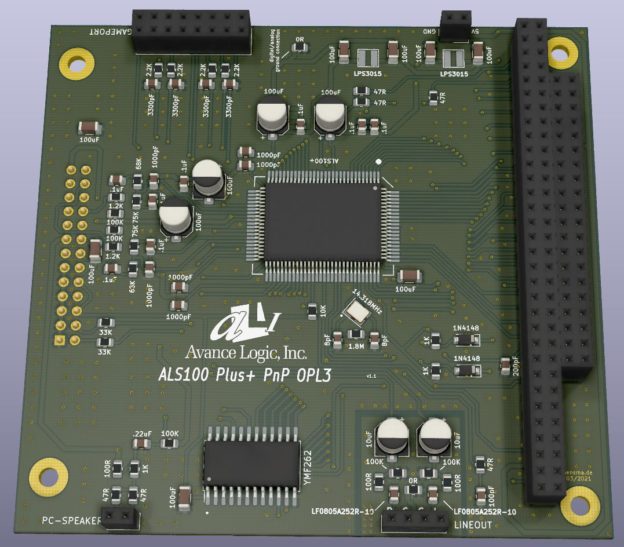
Hi Jensma, thank you for sharing this great project. I am ordering the PCB, I have found all the parts, including a used ALS100 Plus+ and OPL3 chip. The only part that I cannot find anywhere, is the 14.31818 MHz crystal.. I have searched for many days now, but nowhere to be found. Do you maybe know an alternative, or do you have a spare that you could sell? Kind regards, Hugo
Hey there!
Glad you like the project. Try searching for the part number: CX3225GB14318P0HPQCC
If you still can’t find the exact part, mouser has some similar crystals that *should* work just fine:
https://www.mouser.de/c/passive-components/frequency-control-timing-devices/crystals/?frequency=14.31818%20MHz&load%20capacitance=18%20pF&package%20%2F%20case=3.2%20mm%20x%202.5%20mm&instock=y
Hi, would you be so kind as to tell me where you found them? Thanks
Best regards,
Francesco
I’m not sure what you mean 🙂
I wanted to reply to Hugo Bokhorst who says he found the chips 🙂
Hello Jensma, thank you, I ordered one of the alternatives that you linked. Now I have everything to build. Exciting! Only issue I have is that there is no centroid file included in your zip? So PCBWay can’t assemble the board, I need to do that myself.. Will be plugging it into a PCM-4823, which is a great little SBC 486DX4-100 with onboard graphics card, floppy and IDE connector, EDO RAM slots, VGA and PS/2 connectors, but it doesn’t have an audio card, this this will be awesome. A fully functional 486 PC at the size of a 3.5″ bay. In reply to anonymous: I just searched ALS100 Plus+ on ebay and found an old card for 30 bucks. And an OPL3 chip, they still have plenty. The rest you can just find on mouser. I selected these PC/104 plugs: ESW-120-14-G-D and ESW-132-14-G-D.
Nope, I don’t use centroid files & assembly the boards myself. I find it quite relaxing 🙂 I wish you all the best for your build, it sounds awesome!
eierwn
Congratulations. Lately I was just looking for a pc104 sound card for dos gaming, I finally got it on ebay, based on ES1869. If I had seen your project earlier I would not have bought it. Now I want to do this too, would it be possible in your opinion to use the ALS100 chip (non plus)? I have several and I could unsolder the chip.
Francesco
Hey there!
Theoretically yes, but it wouldn’t be a drop in replacement, since the chip have vastly different pinouts.
Cheers,
Jens
Hello
I was so impressed by your posting.
I’d like to make one, too.
So I’d like to ask you a question.
Can I use als120 instead of als100+?
I look forward to your advice.
Hey there! Glad you like it – unfortunatly I can’t find a datasheet or pinout for the ALS120 variant. So I’m not able to tell you if it is interchangeable or not.